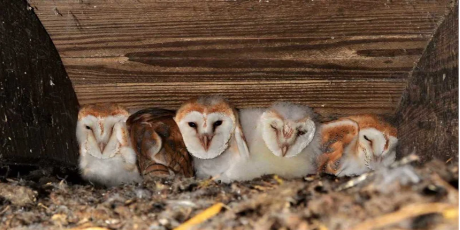Do female mammals actually take more risks than males? 29 Apr 2022

Analysis: males are assumed to be more at risk of ending up as prey then females, but that is not always the case in nature - Dr. Paddy Sleeman, School of BEES/ERI, University College Cork
Risk is difficult to quantify, but getting killed by a predator is the most deadly evidence for it. Males are assumed to more at risk of predation then females, and are therefore considered to end up as prey more often.
When the small mammals prey of owls are examined and sexed, it is argued that most individual prey ought be males. This is because males can be expected to be more active above ground and available to the owls, whereas females are expected to be below ground. Being tied to the young in the nest, females might be expected to be more at risk from below ground predators, such as stoats or, outside Ireland, weasels.
A study of barn owl prey in Ireland found that 90% of the prey that could be sexed were females. This conflicts with the assumption that males take more risks, a standard ecological idea. Another study of owl prey sex in United States concluded that the females were more at risk as, the findings argued, they were pushed out into open habitats by males. They assumed that females were subdominant, and could be pushed into more dangerous habitat.
There are three main reasons why female mammals may take more risks. The first obviously is the females need more food to be fertile, and conceive young or the species stops. That means more time foraging in the open, which is a risky activity. Females could also be subordinate to males, and forced into open habitats by males to forage, where they are more at risk. However they may simply need more food, which takes more time in the risky, open habitats.
There are even more risky things then foraging, and there is a major risk at mating for females. After which they have to look after, and nourish, the young. There is a risk in the mating act itself, but much more importantly in which male they choose in evolutionary terms. If they mate with a less fit male then their young will be less fit. There is evidence that they choose fit males using scent. Finally back to food, females will also need more for carrying, nursing and rearing young.
There has been some telling laboratory work in Poland using the reaction of voles, which are often owl prey, to visits by weasels, another predator that leaves an distinct smell which obviously stress the voles. When the voles smell weasel, the stressed males desert their home range and run away. On the other hand. reproducing females, who take a lot of time to set up home ranges, stay put. Reproducing females take great risks.
A good example of the stress risk reaction in each sex is with disease
What about people? Females take the major risks, by breeding, for both resource acquisition, especially food and protection. Male humans frequently take minor risks such as crossing busy roads and scuffles, but also major risks like motor racing and fighting wars. Motor racing and fighting are not exclusively but are predominantly male pursuits, and prompt male interest.
Do females take more risks? Probably, but the sexes differ in how they approach risk. Under stress, male humans tend to take more risks, whereas females when under stress take fewer risks. They are more risk averse. These strategies may compliment each other, making compatible sexes.
A good example of the stress risk reaction in each sex is with disease. Male humans get certain diseases more often than females, such as rabies. Males, especially young males, are frequent victims of this awful and dreaded disease. This is an example of ignoring risk is a stressful situation as the victims, were normally bitten by a rabid dog.
Monster hunting is women's work
Rabies had a cultural impact here in Ireland and gave rise to aspects of J.M.Synge's The Playboy of the Western World and literally hundreds of fictional stores about vampires starting with Bram Stoker's Dracula. Two subsequent vampire films are of interest here. In Nosferatu: A Symphony of Horror (1922), a women Ellen (played by Greta Schrőder) deals with the villain Count Orlok/Dracula (Max Schreck), having warned the men. The villain brings a swarm of plague rats to Germany, something that in this Covid-19 world we can identify with.
Another more recent example is in Ridley Scott's interstellar vampire film, the chilling Alien (1979). The male crew members on the space ship invite the predator on board taking a risk, ignoring the objections of Ripley (Sigourney Weaver) who is trying to avoid risk under stress. After the males are killed, in the most awful of ways, she kills the alien. The two heroines, as The Economist put it, are united by a core belief 'monster hunting is women’s work’.